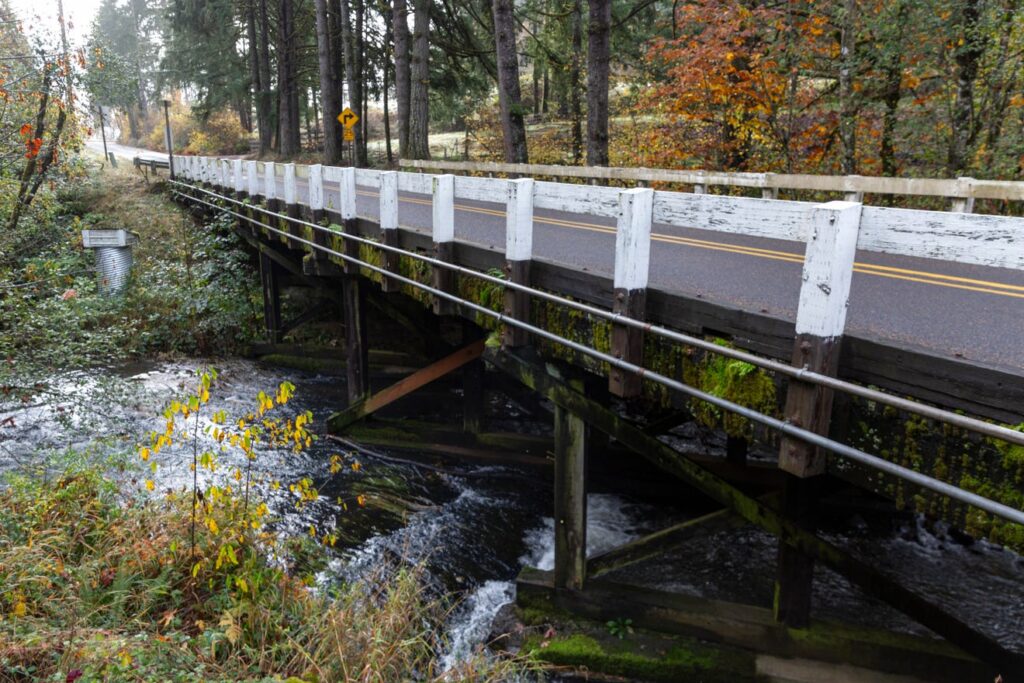By Bill Poehler | Nov. 8, 2024 | Salem Statesman Journal
Oregon Supreme Court justices Thursday heard an appeal of a ruling denying a water right to a group of farmers in Marion and Clackamas counties who want to build a dam on a creek where cutthroat trout spawn.
The lawyer for the East Valley Water District argued the state improperly denied the farmers’ water rights request, prioritizing the state’s water right on Drift Creek — an 11-mile stream that runs from Silver Falls State Park to the Pudding River near Silverton — to protect the fish over water for irrigation.
Merissa Moeller told the justices that the state’s permitting laws only specify the amounts of water being used and not what for what use it is intended. Moeller said the state has to protect existing water rights, rather than choosing which purpose the water right is intended.
“It doesn’t follow that the beneficial purpose of the water right is detached from the rest of the right,” she argued.
Previous court rulings have said the water right is intended to benefit the spawning of the native cutthroat trout. Drift Creek is a spawning ground for species including coho and chinook salmon, Pacific lamprey and winter steelhead.
The dam opponents argued the district’s proposed water right would prevent the state from using its priority water right for the fish because the dam would prevent the fish from being able to migrate seven miles upstream.
“This is the only common sense result that you wouldn’t destroy a senior water right by granting a junior water right,” argued Denise Fjordbeck with the Oregon Department of of Justice.
In 2002, a group of farmers near Mt. Angel formed the East Valley Water District as a special district with the goal of trying to find more sources of water. The district covers 36,000 acres between Woodburn, Silverton, and Molalla.
They proposed building a 70-foot dam on Drift Creek to impound 12,000 acre-feet of water on about 380 acres.
The water district applied to the Oregon Water Resources Department in 2013 for permission to store water there and the department initially signed off.
Farmers whose land would be affected and WaterWatch of Oregon made multiple arguments against the dam, including that the area is habitat for elk and has historical significance because stone tools have been found there.
The water district started purchasing land near Drift Creek in 2016.
In 2019, the Oregon Water Resources Commission denied the application for the dam, saying the state’s water right that benefits native coastal cutthroat trout in the creek gets first priority.
Last year, the state’s Court of Appeals upheld the commission’s decision, which the East Valley Water District appealed to the Supreme Court.
Is who owns the water right first more important than who owns it next?
Oregon law sets water rights by a system of prior appropriation. Whoever holds the oldest water right can use the water first. If there is a time of low water, the “junior” water right holder can be cut off.
Dam opponents argued the proposed project would cut off a lot of water, preventing the state from using its water rights for the spawning fish.
“The new use of water is going to deprive some existing right holder of their use of water,” argued Thomas Christ for WaterWatch. “My client’s position is that injury should be construed more broadly to include not just quantity but quality.”
What’s next in the case?
If the Supreme Court rules in favor of the water district, the land would need to be purchased and the proposed dam would need approval from Oregon’s dam safety office and the U.S. Army Corps of Engineers, among other bodies.
A Supreme Court ruling in favor of the opponents could prevent new water rights from being issued elsewhere in Oregon.
“This is not simply about a few small fish in a creek that no one knows about. This is about all of the water courses in Oregon, including some of the most famous ones,” Christ said.
This article originally appeared in the Salem Statesman Journal on Nov. 8, 2024. Photo by Kevin Neri.

